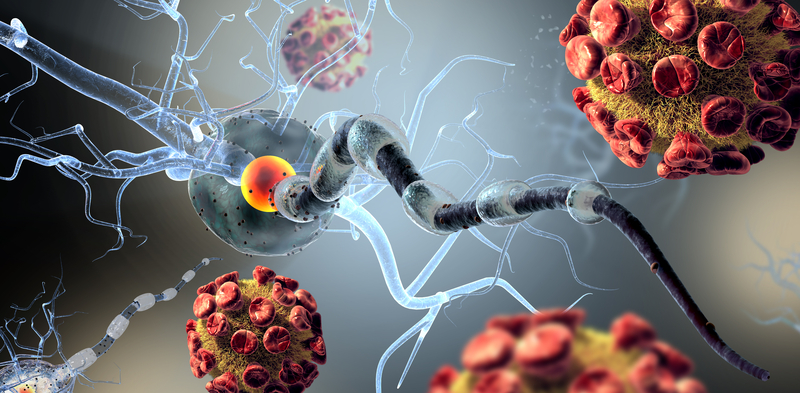
People concerned for their health, sometimes wonder if a Reverse Osmosis system is capable of removing viruses from the water. A Reverse Osmosis filter easily removes even the tiniest of viruses that may be present in water. Much larger bacteria are also easily removed by this impressive filter.
The passages through which water flows through an RO filter are called pores. The pores in an RO filter average in size about 0.1 nm (nanometers) in diameter. The smallest of known viruses, and those dispersed through water are in the 20-30 nm size range. These pathogens are simply too big and cannot fit through the extremely tiny 0.1 nm pores of the reverse osmosis filter.
How Does Reverse Osmosis Remove Viruses? Filter Material and Operation
A Reverse Osmosis filter works by preventing contaminants from passing through the very tiny pores in the filter. In fact, these pores are so tiny that the even tinier water molecule (H2O) can barely pass through them.
In my search for the most effective, reasonably-priced way to purify my drinking water at home, I found that Reverse Osmosis (RO) is far superior to other filters.
Improvements have been made since the original RO filters were produced. Today’s Reverse Osmosis filter is made up of usually three thin sheets of materials that are bonded together to form a single membrane, called a Thin Film Composite (TFC) Membrane.
This TFC membrane is manufactured in a way so as to contain many millions of microscopic holes, or pores. Because some substances can pass through these very tiny pores, while other, larger materials cannot, the membrane is considered to be a “semi-permeable” membrane.
A reverse osmosis filter has a typical pore size of approximately 0.1 nm (nanometers). A nanometer is one-billionth of a meter. The typical pore size in an RO filter is one-tenth of that one minuscule nanometer.
0.1 nm equals 0.0001 µm (micrometer). A micrometer is one-millionths of a meter, but the average size of a pore in an RO filter is only one-ten-thousandths of a micrometer. Virtually all pathogens, viral or bacterial, are filtered out of the water, when using a residential reverse osmosis system.
So now we can begin to understand just how extremely small this really is. A single water molecule, one tiny water molecule can barely pass through the microscopic pores in an RO filter, leaving viral and bacterial pathogens behind.
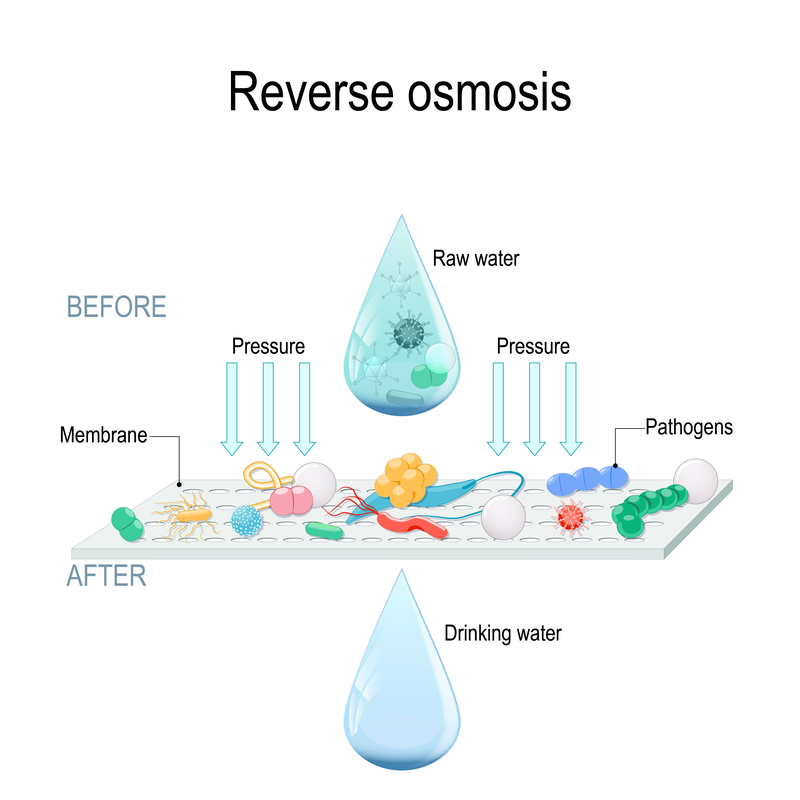
The Main Viral Waterborne Pathogens
Hundreds of unique viruses infect humans. Most viruses make their way into the environment and commonly into groundwater by human and animal excretion. The most common way to become infected is touching or shaking hands with those infected, or picking up airborne respiratory droplets dispersed by coughing or sneezing. Viruses are also spread via contaminated drinking water.
The most prominent waterborne viruses are classified in 6 families:
Adenoviridae( a DNA virus), and the 5 RNA virus families, Astroviridae, Caliciviridae, Hepeviridae, Picornaviridae, and Reoviridae.
Viruses can cause a wide range of mild to severe symptoms, such as:
- Conjunctivitis ( Pink eye )
- Gastroenteritis ( Inflammation of the lining of the intestines )
- Hepatitis ( Inflammation of the liver)
- Meningitis ( Inflammation of the fluid and membranes that surrounds your brain and spinal cord )
- Myocarditis ( Inflammation of the heart muscle )
- Paralysis ( The loss of the ability to move )
- Respiratory disease ( Diminished lung function )
- Cancer ( Changes to DNA that causes uncontrolled cell division )
- etc.
| Viral Pathogen | Image of Virus | Size of Virus |
|---|---|---|
| Adenoviridae (Adenovirus) | 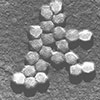 | 70-100 nm |
| Astroviridae (Astrovirus) | 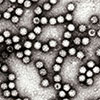 | 28-35 nm |
| Caliciviridae (Norovirus) | 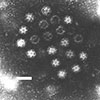 | 27-41 nm |
| Hepeviridae (Hepatitus E Virus) | 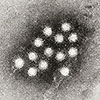 | 32-34 nm |
| Picornaviridae (Picobirnavirus) | 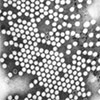 | 20-30 nm |
| Reoviridae (Rotavirus) | 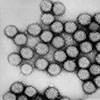 | 60-100 nm |
| Polyomaviridae (Polymaviruses) | 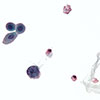 | 40-50 nm |
Details of the Most Common Waterborne Viruses
Adenoviridae (Adenovirus):
Adenoviruses are medium-sized, about 70–100 nm (nanometers). Adenoviruses are unusually resistant to chemical or physical agents and can survive a wide range of pH conditions. This allows it to survive outside of the body and water for long periods.
Adenoviruses can cause a wide range of illnesses such as:
• Common cold or flu-like symptoms
• Fever
• Sore throat
• Acute bronchitis (inflammation of the airways of the lungs, sometimes called a “chest cold”)
• Pneumonia (infection of the lungs)
• Pink eye (conjunctivitis)
• Acute gastroenteritis (inflammation of the stomach or intestines causing diarrhea, vomiting, nausea and stomach cramping).
Most adenovirus infections are mild and may require only minimal care to relieve symptoms, such as over-the-counter pain medicines or fever reducers.
Astroviridae (Astrovirus):
Astroviruses are small, in the 28–35 nm diameter range. This virus replicates in the gastrointestinal tract of humans. The main symptoms are diarrhea, followed by nausea, vomiting, fever, malaise and abdominal pain. Some research studies have shown that the incubation period of the disease is approximately three to four days. Astrovirus infection is not usually severe, but in rare cases can lead to dehydration.
Caliciviridae – (Norovirus):
Noroviruses are a family of viruses. Diseases associated with this family include feline calicivirus (respiratory disease), rabbit hemorrhagic disease virus (often-fatal hemorrhages), and Norwalk group of viruses (gastroenteritis). The caliciviruses have a diameter ranging from 27 –41 nm. These viruses enter groundwater through the feces of infected individuals, contaminated drinking water.
Caliciviruses naturally infect vertebrates, and have been found in a number of organisms such as humans, cattle, pigs, cats, chickens, reptiles, dolphins and amphibians. Calicivirus infections commonly cause acute gastroenteritis, which is the inflammation of the stomach and intestines (e.g. the Norwalk virus). Symptoms can include vomiting and diarrhea.
Hepeviridae (Orthohepevirus or Hepatitis E virus):
The Hepatitis E virus is a family of viruses, with a diameter of around 32-34 nm. Humans, as well as many animals are natural hosts for this virus.
Viral Hepatitis can be accidentally transmitted by injection, but very rarely by blood. Food-borne outbreaks are common. Consuming shellfish that are cultivated in polluted water is can greatly increase risk of infection. It’s also transmitted by consuming raw infected meat and by the other method described above.
Symptoms can be mild to severe and include fatigue, fever, nausea, appetite loss, jaundice (yellowing of the skin or the whites of the eyes), excreted bile through the urine, causing a dark amber color, diarrhea, abdominal cramping, joint pain, kidney failure, pancreatitis, and pericarditis.
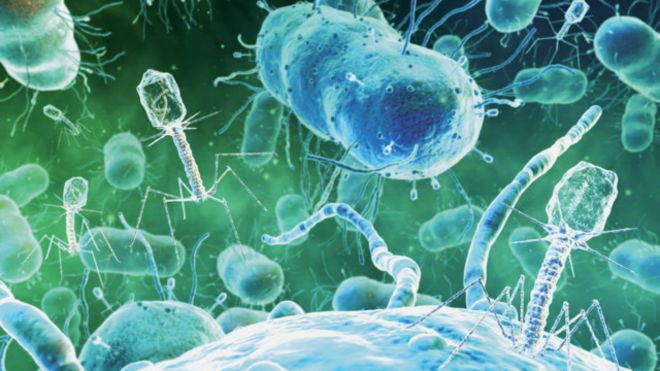
Epstein–Barr virus (EBV):
Epstein-Barr is one of the nine known human types of virus in the herpes family. It’s one of the most common viruses in humans. The Epstein-Barr virus is associated with lymphomas, gastric cancer, and several autoimmune diseases. The virus is about 122–180 nm in diameter.
The EBV virus doesn’t live long on surfaces and objects, one must be exposed to fresh saliva to contract it. EBV spreads most commonly through bodily fluids, especially saliva. However, EBV can also spread through blood and semen during sexual contact, blood transfusions, and organ transplantations.
EBV can be spread by using objects, such as a toothbrush or drinking glass, that an infected person recently used. The virus probably survives on an object at least as long as the object remains moist.
The first time you get infected with EBV (primary EBV infection) you can spread the virus for weeks and even before you have symptoms. Once the virus is in your body, it stays there in a latent (inactive) state. If the virus reactivates, you can potentially spread EBV to others no matter how much time has passed since the initial infection.
Picornaviridae (Picobirnavirus):
Picobirnaviruses are a group of viruses that are widely prevalent. This group of viruses affect vertebrates, including humans, other mammals and birds. The sizes of these viruses are typically the smallest of the known viruses, ranging in size of about 22 to 30 nm in diameter. They are typically transmitted by the fecal-oral pathway, and by salivary and respiratory droplets.
Picornaviruses cause a range of diseases including gastroenteritis in humans. Most of those who become infected are unaware because they have no symptoms. Some picornaviruses will cause mild illnesses, a few will cause serious conditions of the central nervous system, heart, skeletal muscles, and liver.
Adequate sewage disposal and uncontaminated water supplies are necessary for prevention of these viral infections.
Reoviridae (Rotavirus):
Rotavirus is a family of viruses that can infect a wide range of hosts, including vertebrates, invertebrates, plants, and fungi. Their size are generally in the range of 60 to 100 nm diameter.
Most human rotavirus infections are mild and don’t require medical treatment, however, some infections can cause severe diarrhea and intestinal cramping in children.
Polyomaviridae (polyomaviruses):
Polyomaviruses is a family of viruses, typically in a package of about 40-50 nanometers in diameter. Most are very common and don’t infect humans, or cause symptoms, however, several of this genome are known to cause an aggressive Merkel Cell skin cancer in humans.
Polyomaviruses are transmitted by the usual pathways, as mentioned in the other viruses above, however how it spreads through the body is still unknown.
Spread of Viral Infections – Common Modes of Transmission
Viruses are usually spread via respiratory droplets, when a person breathes in the air close by a person who has coughed or sneezed. Viruses also infect humans through close personal contact, such as touching or shaking hands or touching surfaces with virus on it, then touching your mouth, eyes or nose before washing your hands.
Another transmission path that is common among all viruses, is through the Fecal-Oral pathway. This occurs when human viruses are released in large quantities in the stool from infected individuals and contaminates local groundwater, fresh water and or marine water. This is usually due to inadequate wastewater treatment.
Surfaces or materials which can carry infection, such as clothing, utensils, and furniture, handrails, doorknobs, countertops, also need to be sterilized using non-toxic solutions to prevent transmission.
Contaminated Food – Fruits and vegetables grown in such contaminated water may also act as sources of viral infection. Poor food handling practices, poor hand hygiene and contamination of inanimate objects are other factors that encourage intestinal virus transmission.
Human viruses can be prevented by making sure you get your water from a safe source and filter your drinking water with a residential Reverse Osmosis system.
Routinely sterilize surfaces within your home and be careful to minimize your contact with surfaces where many people routinely touch, outside of the home. Routinely wash your hands with soap and water and cook meat thoroughly. These steps will go a long way in avoiding these viral pathogens.
Sources:
- Wikipedia: Adenoviridae
- Wikipedia: Astrovirus
- CDC Transmission of Adenovirus
- Summary of Excreted and Waterborne Viruses
- Reverse Osmosis Water Filter Buyers Guide
- Wikipedia: Reoviridae
- Incidence of Enteric Viruses in Groundwater from Household Wells in Wisconsin
